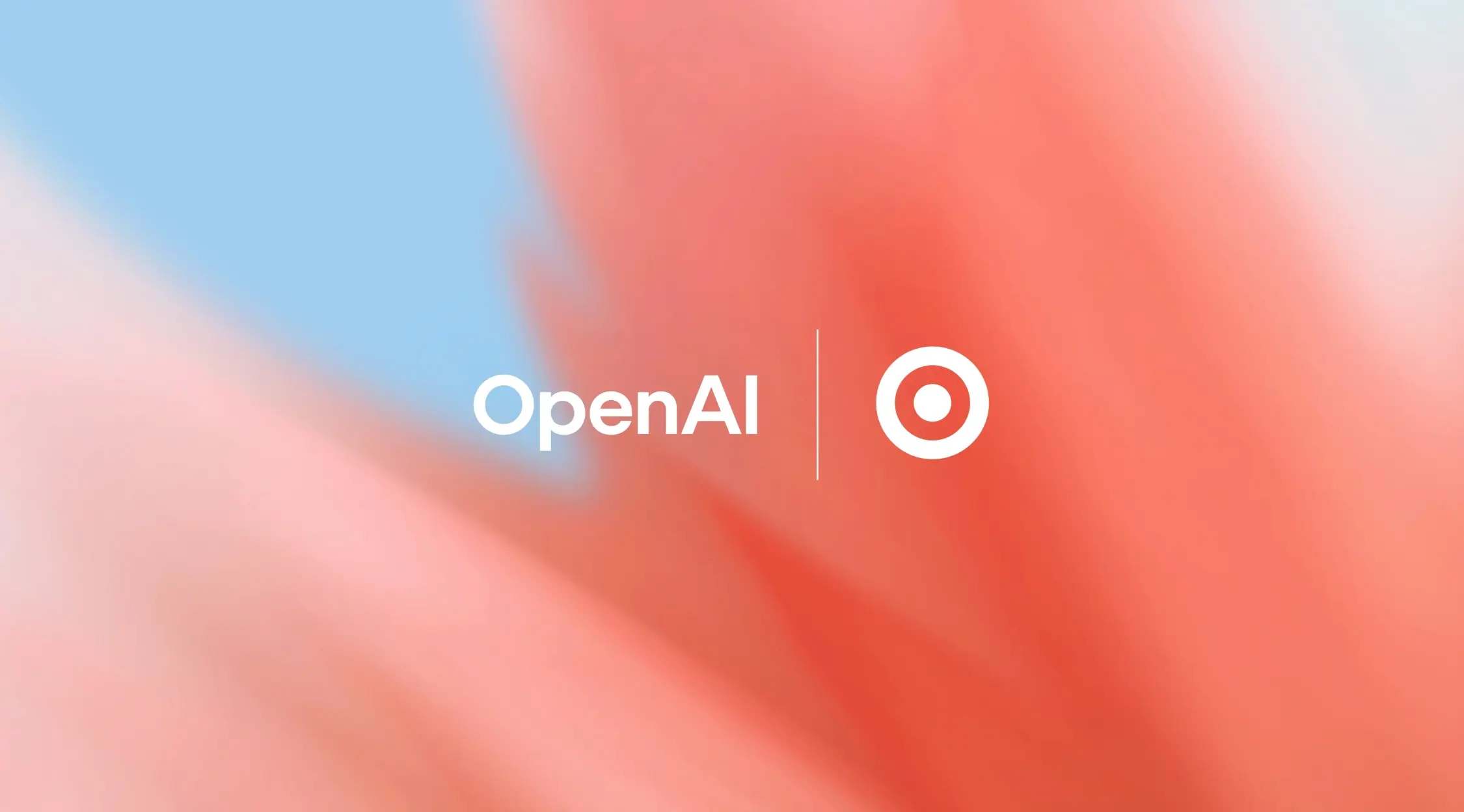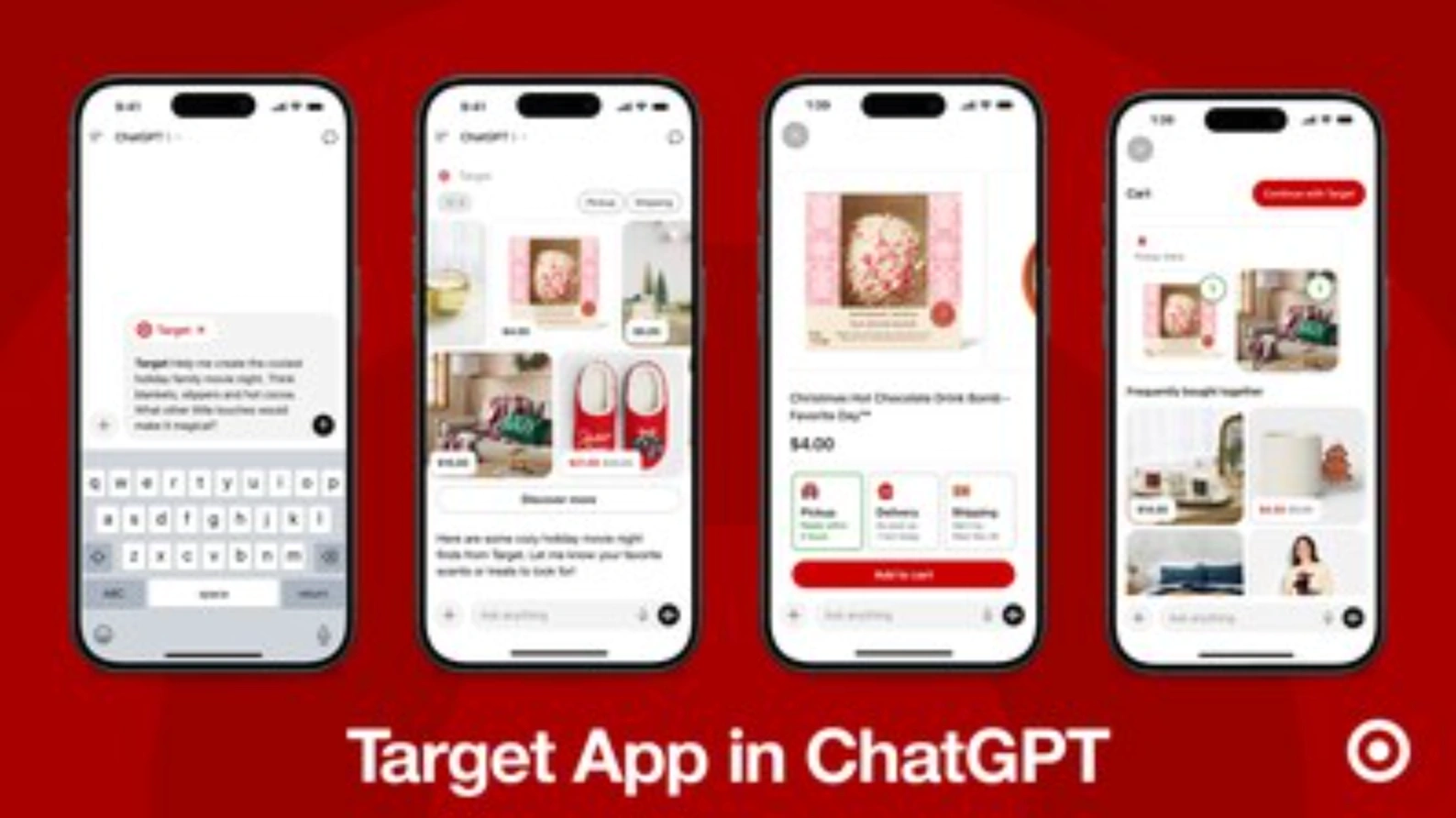Target x ChatGPT App Partnership: How AI Curates Smarter Carts and Higher-Value Orders
Updated on
Published on

The Target x ChatGPT app arrives right as retailers are scrambling to make recommendations feel less robotic and more like talking to a sharp store associate. Instead of clicking down a maze of categories, you tag Target inside ChatGPT, describe what you are trying to do, and let AI assemble a basket in real time. Under the hood, that means merging Target’s data, fulfillment, and merchandising rules with ChatGPT’s reasoning and language understanding, effectively redesigning how recommendations are generated and delivered.
- The Target x ChatGPT integration is more than a new channel; it is a new front end for Target’s rec systems.
- Natural language queries replace rigid filters and manual browsing steps.
- Target’s merchandising and fulfillment logic still controls what can actually be recommended.
At a Glance
- The Target aChatGPT lets shoppers tag Target in a chat, get curated product ideas, build multi-item baskets, and check out using their Target account. (Target, OpenAI)
- The experience supports fresh food, drive up, Order Pickup, and shipping, with Target Circle linking and same-day delivery coming soon. (Target)
- Target will keep using OpenAI models internally for tools like Shopping Assistant, Gift Finder, and Agent Assist, deepening AI across the business. (OpenAI)
- The Target app in ChatGPT turns recommendation engines from page widgets into full conversational journeys driven by intent.
- Success will hinge on how accurately the Target x ChatGPT app balances personalization, trust, and Target’s value positioning.
What The Target x ChatGPT App Actually Does
At a basic level, the Target app in ChatGPT lets shoppers talk to Target inside ChatGPT instead of opening a separate site or app. You can tag Target and ask it to “plan a family holiday movie night” and the Target x ChatGPT app responds with a curated list of throws, snacks, candles, and kids’ pajamas you can drop straight into a basket. You then check out with your Target account and choose drive up, Order Pickup, or shipping.
- The app supports multi-item baskets and full cart checkout in one flow. (Target)
- Shoppers never need to leave ChatGPT to complete a Target order. (TechRadar)
- The experience is positioned as “as natural as chatting with a friend” while you shop. (Target)

Why This Matters For Recommendation Engines
Traditional recommendation engines sit in carousels: “You may also like,” “Frequently bought together,” and so on. The Target x ChatGPT app flips that model into a conversation, where the recommendation engine responds to open-ended goals like “host a Friendsgiving for eight vegetarians” or “redo my bathroom under $300.” That shift from item-centric to mission-centric behavior is the real innovation; it lets Target’s algorithms optimize for solving a task, not just nudging you toward the next SKU.
- Conversational context gives the engine far richer signals than a single product view.
- The app can balance budget, occasion, style, and constraints in one thread.
- Target x ChatGPT turns recommendations into a journey instead of isolated tiles on a page.
.webp)
How Target’s Data Meets ChatGPT’s Reasoning
Underneath the friendly chat, Target still controls assortment, pricing, availability, and fulfillment logic, while ChatGPT handles language and reasoning. The Target x ChatGPT app essentially routes your natural language request through Target’s APIs and recommendation stack, then lets ChatGPT explain and refine those suggestions in plain English. Over time, signals from what people ask, accept, or reject will feed back into Target’s algorithms, making them more context-aware.
- Target continues to use OpenAI APIs and ChatGPT Enterprise internally for tooling and experimentation. (OpenAI)
- Recommendation rules still have to honor inventory, promos, and margin, even in a chat.
- The Target x ChatGPT app becomes a new data source about how people actually describe their needs.
From Product Widgets To Mission-Based Shopping
A typical website assumes you already know the product: “show me TVs 55–65 inches under $800.” The Target x ChatGPT app encourages prompts like “set up a cozy gaming corner in my small apartment,” which is much closer to how people think. That lets the recommendation engine propose full solutions; a monitor, lighting, a storage ottoman, cables, snacks and adjust based on follow-up questions. The value of B2C AI here is not just convenience; it is changing the unit of work from product to mission.
- Mission-based recommendations increase average order value by bundling complementary items. (Retail Dive)
- Shoppers feel less like they are “being sold SKUs” and more like they are getting a plan.
- Target x ChatGPT helps compress top-of-funnel browsing and mid-funnel discovery into one thread.
Personalization, Loyalty, And Target Circle
Target plans to let users link Target Circle accounts to the Target x ChatGPT app, pulling in preferences, offers, and loyalty history. That means recommendations can eventually align with your typical price point, brands you favor, and your promo eligibility. Done well, this gives the recommendation engine a much sharper picture of what “good” looks like for you, not just for a generic Target guest.
- The app will add Target Circle linking and same-day delivery in upcoming releases. (Target, Retail Dive)
- Loyalty data can refine suggestions without forcing you through long preference forms.
- The Target x ChatGPT app becomes another touchpoint where Circle benefits show up clearly.

Inside Target’s Broader AI Commerce Stack
The ChatGPT integration sits on top of Target’s existing AI investments, not beside them. The retailer already uses AI for Shopping Assistant and Gift Finder on its own channels, Agent Assist and Store Companion for employees, and JOY and Guest Assist for vendors and support. (OpenAI) Target x ChatGPT is the external, guest-facing expression of the same push: let AI handle search, suggestion, and triage so human teams can focus on higher-value work.
- 18,000 Target headquarters employees already have access to ChatGPT Enterprise. (OpenAI)
- Internal agent tools handle tasks like price matching, returns, and complex support.
- Recommendation logic will increasingly power both front-of-house (guests) and back-of-house (teams).
Where The Recommendation Engine Could Go Next
Long term, the recommendation engine behind the Target app in ChatGPT could evolve into something much more agentic. Imagine telling Target x ChatGPT, “keep my pantry stocked with basics unless prices spike” or “update my kids’ wardrobes each season within this budget,” and letting it negotiate baskets over time. That requires careful guardrails, consent, and clarity, but the building blocks; natural language, personalization, and multi-item ordering are all now in place.
- Future rec engines may act more like ongoing agents than one-off suggestion tools.
- Target will need transparent controls so guests can see and edit how AI is acting on their behalf.
- If done right, the Target app in ChatGPT could turn episodic shoppers into long-horizon subscribers of sorts.
.webp)
Risks And Challenges For Target x ChatGPT
All of this power comes with real risks. Recommendation engines can misfire, surface biased results, or over-prioritize margin over guest value if not tuned carefully. In a conversational setting, hallucinations, confusion around availability, or opaque ranking logic could erode trust quickly. Target x ChatGPT will have to prove that its suggestions are accurate, brand-appropriate, and aligned with Target’s reputation for value, not just clever.
- Misaligned recommendations feel more personal when they come from a “helper” in chat.
- Guardrails around safety, fairness, and kids’ products will be heavily scrutinized.
- Transparent messaging (“here’s why we picked these”) can de-risk the Target x ChatGPT app for guests.
What This Means For Other Retailers
For the rest of retail, Target x ChatGPT is both a competitive warning and a blueprint. It shows that your recommendation engine can live wherever your customer already spends time, not only on your .com. It also sets a bar: simply bolting generative AI on top of weak product data will not be enough if Target and other early movers offer smoother, more helpful experiences.
- Retailers without strong first-party data and clean catalog structures will struggle to match this.
- Partnerships like Target x ChatGPT change consumer expectations for “help me find something” flows.
- The next wave of e-commerce competition may be fought at the rec engine layer, not just in ad units and site UX.
.webp)
FAQ
What is the Target x ChatGPT collaboration?
It is a Target shopping experience that lives inside ChatGPT, letting you ask for ideas, get curated suggestions, build baskets, and check out with your Target account.
How is this different from using the regular Target app or website?
Instead of browsing categories and filters, you describe your task in natural language and let the Target x ChatGPT app assemble options and a basket for you.
Does Target x ChatGPT replace Target’s own digital channels?
No, Target’s website and native app remain primary channels; the Target x ChatGPT app is an additional, conversational front end for discovery and recommendations.
How does personalization work in the Target x ChatGPT app?
Over time, linking your Target account and Target Circle data will let the app tailor suggestions to your preferences, budget, and loyalty offers.
Why does this matter for recommendation engines overall?
Because it moves recommendations out of static carousels and into full conversations, where AI can understand context, intent, and constraints, and then build smarter baskets in real time.







